Skip ahead:
Cool e-mails Fact: More than 3.5 billion messages will be received each day in 2023
Introduction
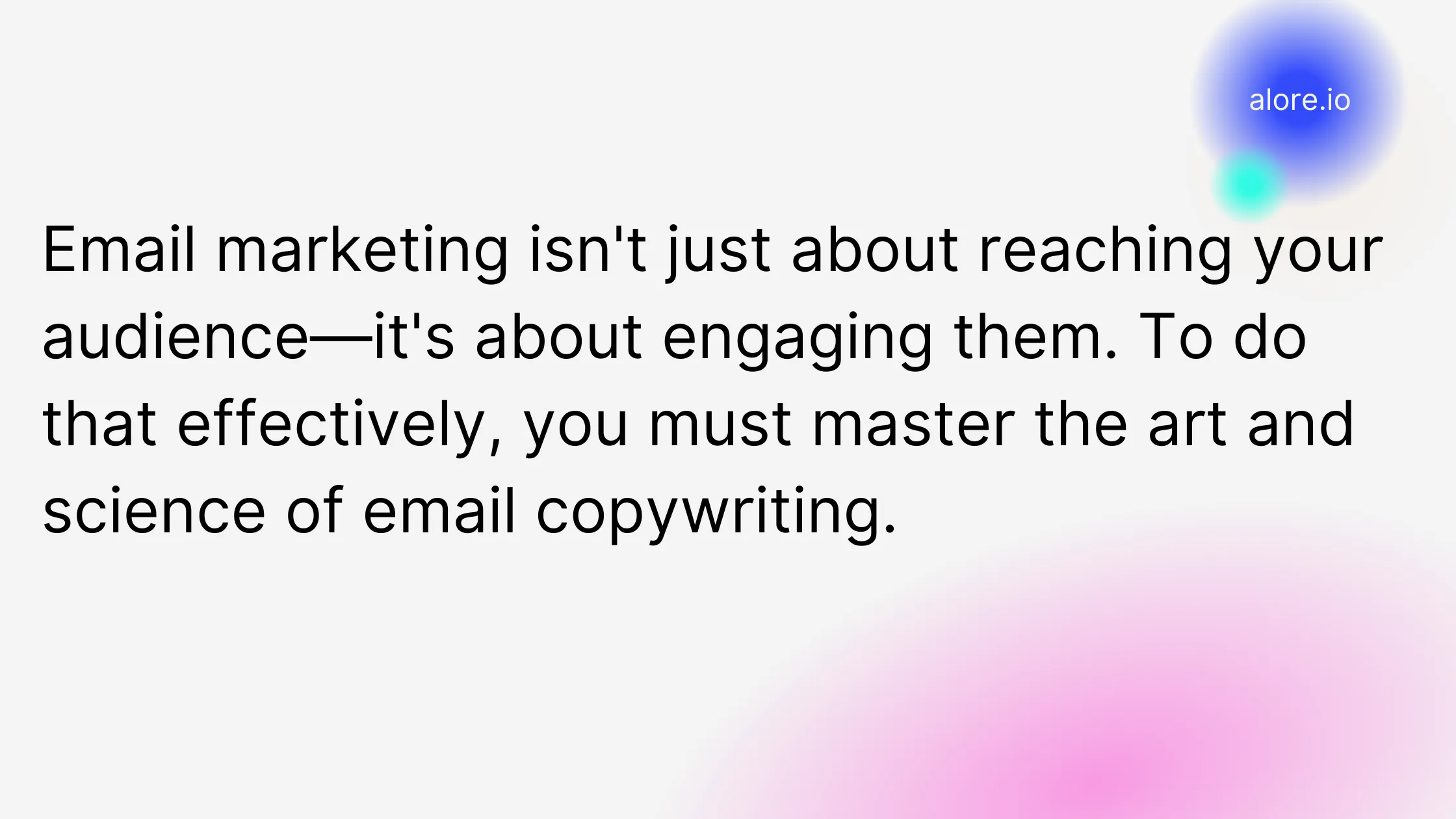
In today's digital epoch, no business – small or large, nascent or established – can afford to overlook online marketing. This dynamic realm offers a wide array of methods to tap into a diverse audience, engage potential customers, and ultimately, ignite the spark for sales. Among the myriad techniques, email marketing emerges as a stalwart, underpinned by the compelling art of writing effective email copy.
The Art and Science of Email Copywriting
Embarking on the journey of writing email copy isn't merely about stringing together coherent sentences. It's an intricate dance of words, requiring you to communicate your marketing message persuasively to your target audience and ignite a call to action. Email copywriting thus straddles both art and science—calling for creativity to craft captivating content and a data-driven mindset to ensure it hits the mark.
The anatomy of an email includes a subject line, preview text, and body content—each serving a unique purpose. Your subject line acts as the curtain raiser—the first impression that can coax the recipient to explore further your marketing message. Think of it as the headline of a gripping news article or an enticing blog post. Following suit, the body of your email needs to fulfill the promise your subject line heralded, providing the reader with anticipated information and a clear pathway to action.
The task of writing copy for an email campaign involves a profound understanding of your audience's needs, preferences, and behavior. A good subject line can significantly elevate your email open rates, but it's the compelling content of your email that holds your reader's attention and triggers them into action.
The Potential Advantages of Effective Email Copy
Masterful email copywriting holds immense potential for businesses. It offers a conduit to a larger audience, fosters brand awareness, paves the way for lead generation, and cements customer retention.
By crafting superb first email messages and copy, you can transform potential customers into active ones and convert occasional buyers into repeat customers. Regularly using welcome emails and delivering valuable, relevant content to your subscribers builds a foundation for a loyal customer base – a lynchpin for any thriving business.
Email marketing, when executed right, offers an astounding return on investment. A study by the Direct Marketing Association found that for every dollar spent on an email marketing campaign, businesses could expect an average return of $42. This statistic underscores the latent potential of well-articulated marketing emails.
Common Pitfalls to Avoid in Email Copywriting
Despite the undeniable potential of email marketing, many businesses stumble in harnessing its full power. Several common pitfalls can thwart efforts to create effective email copy. By recognizing and avoiding these pitfalls, you can craft more effective email marketing campaigns that will significantly boost your business's online presence and customer engagement.
- Not Optimizing for Mobile: With an increasing number of email subscribers accessing their inboxes through mobile devices, not optimizing your email content for mobile can severely hurt your engagement rates.
- Ignoring Personalization: Your email recipients are human beings who appreciate personal touches. Ignoring personalization can lead to lower open rates and engagement as blanket emails often come across as impersonal and irrelevant.
- Neglecting the Call to Action (CTA): The CTA is a vital part of your email copy that drives the reader towards the desired action. Failing to include a clear, compelling CTA can make your email less effective.
- Underestimating the Importance of Testing: Digital marketing, including email marketing, requires constant testing and refinement. If you're not testing different versions of your subject lines, email content, and CTAs, you're likely missing out on opportunities to improve your campaigns.
- Sending the Same Email to Entire List: Sending the same email to all your subscribers, regardless of their interests or where they are in the buyer's journey, can lead to decreased engagement and higher unsubscribe rates.
- Forgetting to Proofread: Small typos and grammatical errors can have a big impact on your brand image and the professionalism of your email. Always proofread your emails before hitting send.
- Triggering Spam Filters: Overuse of sales jargon, exclamation points, and all-caps text can land your emails in the spam folder, significantly reducing the chances of your message being seen.
- Using a No-Reply Sender Name: Using a no-reply sender name can make your emails feel impersonal and can discourage your recipients from engaging with your content.
- Lack of Relevance: Sending emails that aren't relevant to your customers' needs or interests can lead to increased unsubscribe rates and decreased customer loyalty.
- Overloading the Email with Multiple Messages: Focus your email on one specific topic or offer. Trying to communicate too much in a single email can confuse the reader and dilute your main message.
- Not Tracking Results: Not tracking key metrics like open rates, click-through rates, and conversion rates means you're missing out on valuable insights that could help you improve your future email campaigns.
By avoiding these common pitfalls, you're on your way to crafting more effective email marketing campaigns that can significantly boost your business's online presence and customer engagement.
In this guide, we'll provide comprehensive insight into the art and science of email copywriting. We will cover everything from the basics of writing captivating subject lines and engaging body copy to advanced techniques such as personalization, segmentation, and automation. Our aim is to help you create effective email marketing campaigns that engage your audience, boost conversions, and drive more sales.
Remember, success in email marketing doesn't happen overnight. It takes time, patience, and constant learning. So let's get started and delve deep into the fascinating world of email copywriting!
Email Copywriting Essentials
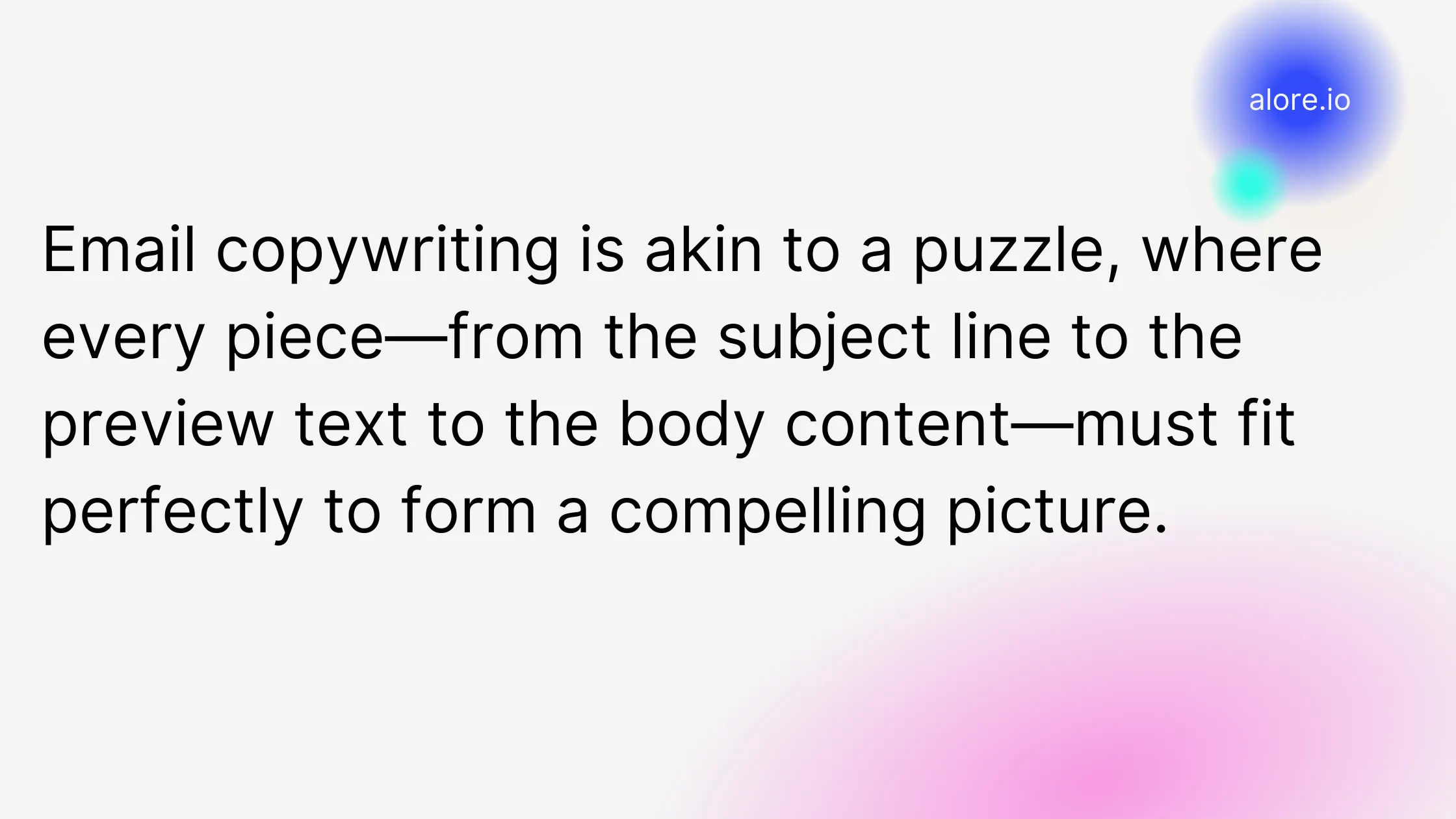
When it comes to email marketing copy, the content you create carries the weight of your business's success. Each element in your email marketing copy serves a purpose and has the power to make or break your whole marketing campaign. To master the art and science of email copywriting, it is crucial to understand its fundamental building blocks, primary objectives, and the anatomy of a well-crafted email marketing copy.
Fundamental Building Blocks of Email Copy
Email copywriting might seem daunting, but it becomes manageable by breaking it down into its fundamental elements. Writing good email copy requires a keen understanding of these building blocks and their roles in email marketing campaigns.
Subject Line: Your email's subject line is your first point of contact with your email subscribers. It should be compelling enough to persuade your recipients to open the email. To write an effective email subject line, keep it concise, incite curiosity, and highlight the benefits for the reader.
Preheader Text: Also known as the preview text, the preheader is the snippet of text that follows the subject line when an email is viewed in the inbox. A well-crafted preview text can complement your subject line and encourage recipients to open the email.
Email Body: This is the meat of your email, where you deliver on the promises made in your subject line copy and preheader text. It's where you provide the relevant content to your readers and incorporate a clear call to action.
Call to Action (CTA): After reading your email, you want your readers to do the CTA. It should be direct, compelling, and easy to locate in the email. Make sure it's written in the action-oriented language.
Personalization: Personalized emails show your subscribers that you value them as individuals. This can include using the recipient a real person's name, referencing past purchases, or tailoring the content to their preferences.
Segmentation: This involves grouping your email subscribers based on certain criteria, such as their demographics, interests, or buying behavior. You can send more targeted and relevant emails by segmenting your subscriber list.
Formatting and Design: Your email message's appearance can significantly impact its readability. Break up your email copy into short, digestible paragraphs. Use bullet points, subheadings, and images where appropriate.
Primary Objectives and Uses of Email Copywriting
Email copywriting serves several objectives, from building brand awareness to driving sales. Understanding these goals can help you craft more effective email marketing campaigns.
Brand Awareness: Regular emails help keep your business at the forefront of your subscribers' minds. Your email copy should reflect your brand's voice and values.
Engagement: Good email copy prompts your subscribers to take action. This can be reading a blog post, filling out a survey, or sharing your content on social media.
Sales: Promotional sales emails often aim to convert potential customers into buyers. Crafting persuasive email copy can motivate subscribers to make a purchase.
Customer Retention: Email marketing isn't just about acquiring new customers; it's also about retaining existing ones. Regular, valuable emails can help foster customer loyalty.
Traffic: Email campaigns can help drive traffic to your website or landing page. Including hyperlinked text within your email copy can encourage subscribers to visit your web page.
The Anatomy of a Well-Crafted Email
A well-crafted email has several components, each with a specific role in engaging the recipient and driving action.
Subject Line: A great subject line grabs the recipient's attention and entices them to open the email. For instance, killer subject line, "Unlock Your Free E-book Now!" is a subject line that creates urgency and highlights the benefit for the subscriber.
Preheader Text: A good preview text complements the subject line and encourages the recipient to open the email. Continuing from the previous example, a fitting preheader could be "Limited time offer: Claim your free e-book and boost your marketing skills today!"
Email Body: The body of the email is where you provide value to your reader and direct them to your CTA. In our example, you could briefly introduce the e-book, why it's beneficial, and how to download it.
Call to Action (CTA): The CTA is the action you want the reader to take after reading your email. Make sure it's clear and compelling. In this case, it could be "Claim Your Free E-book".
Footer: This is where you include necessary information like your contact details, social media links, and an unsubscribe link. Make sure this information is easy to find and read.
Personalization: To make your email more engaging, try to personalize it where possible. This can include addressing the recipient by name or tailoring the content to their interests.
To conclude, mastering the art of email copywriting is a strategic process that requires understanding the fundamental building blocks of an an email campaign, knowing the objectives of email copywriting, and learning the anatomy of a well-crafted email. Once you master these elements, you'll be well on your way to creating engaging, high-converting email marketing campaigns.
The Art of Writing Emails
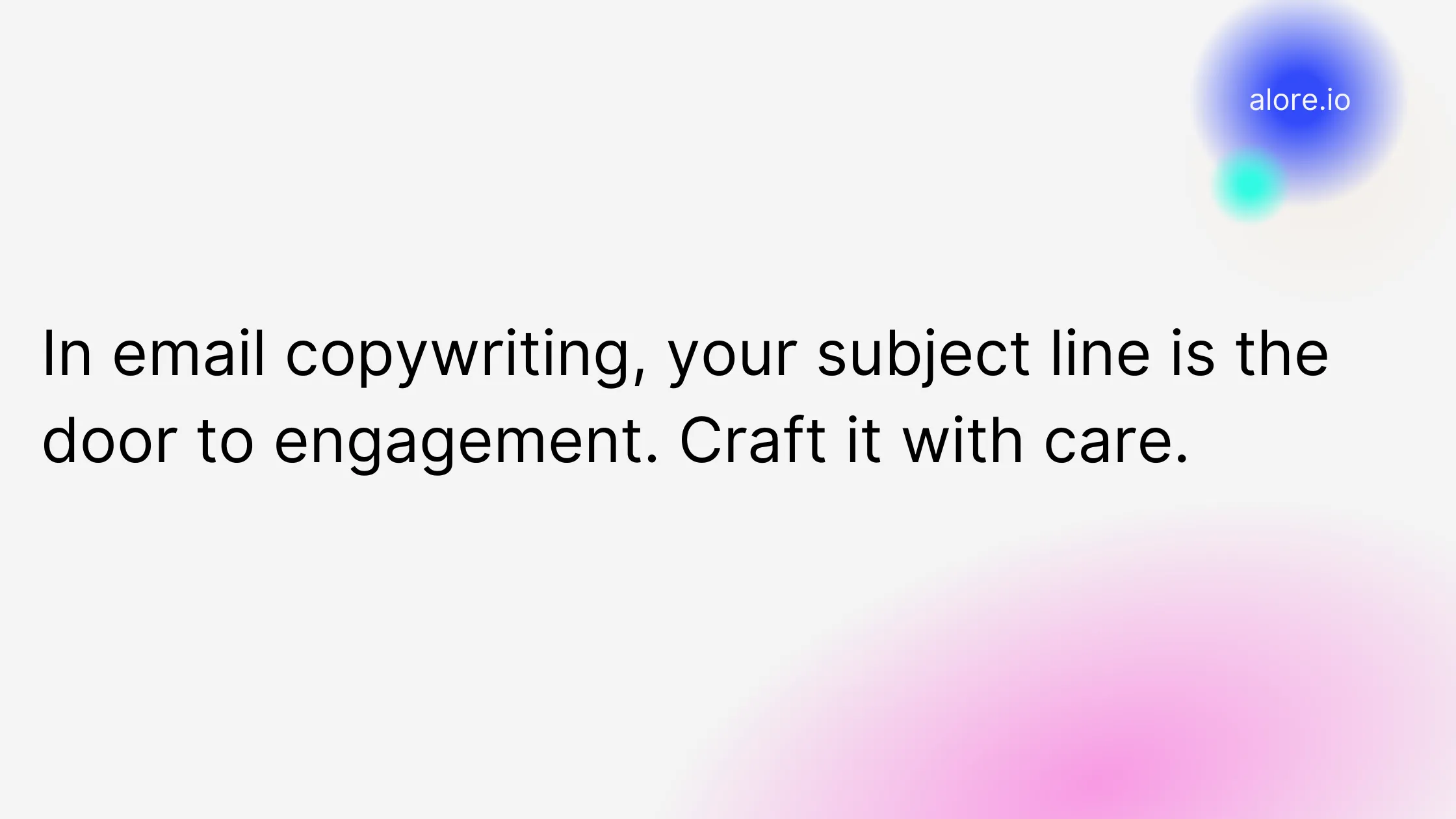
In the realm of digital marketing, email is a powerful and essential tool. However, to maximize its potential, you need to understand and master the art of writing emails. Every part of your email should be meticulously crafted from the subject line to the body content to capture your audience's attention and encourage action.
Mastering the Process of Email Writing
Email writing might seem straightforward, but crafting an engaging and effective marketing email involves a strategic process. Below are the steps and email tips you can follow to master the process of marketing email writing.
Understand Your Audience: Knowing your target audience is the first step in writing a compelling email. Understand their interests, needs, and pain points to tailor your email messages and your content accordingly.
Define Your Objective: Before writing, clearly define what you want to achieve with your email. Whether driving traffic to your website, promoting a product, or building customer relationships, having a clear objective can guide your writing.
Craft Your Content: Now, it's time to write your email. Remember to keep your language simple and direct. Your subscribers are likely busy, so make sure your content is concise and easy to digest.
Edit and Proofread: Once you've written your email, take the time to edit and proofread. Look for any grammatical errors, typos, or awkward phrasing. Small mistakes can harm your brand's image and the professionalism of your email.
Test and Analyze: After sending your email, analyze your results. Look at your open rates, click-through rates, and conversion rates. Use this information to refine your future emails.
Techniques for Engaging Email Subject Lines
Your email subject line acts as the gatekeeper of your email content. It's the first thing your subscribers see when they receive your email. Here are some techniques for crafting engaging email subject lines:
Keep it Short and Sweet: With many subscribers likely checking emails on mobile devices, keeping your subject line concise is crucial. Aim for 50 characters or less.
Use Action Words: Start your subject line with a verb to make it more enticing. For example, "Download your free e-book now" is more engaging than "Free e-book available".
Create a Sense of Urgency: Add time-sensitive language to encourage subscribers to act quickly. For example, "Sale ends tonight - grab your deal now!"
Personalize: Personalized subject lines can increase open rates. Consider adding your subscriber's name or information relevant to them.
Ask a Question: Questions can pique curiosity and encourage subscribers to write emails or open your email for the answer.
Perfecting the Art of Preview Text
The preview text, or preheader text, is another vital component of your email. It gives your subscribers a sneak peek of your email content, enticing them to open it. Here are some practical tips to perfect your preview text:
Complement Your Subject Line: Your preview text should complement, not repeat, your subject line. Use it to provide additional context or information.
Keep it Short: Like your subject line, your preview text should be concise. Aim for about 40-50 characters.
Include a Call to Action: If it fits naturally, include a call to action in your preview text to encourage your subscribers to open the email.
Adapting Web Writing Techniques for Emails
Writing for emails is different from writing for web pages, but some web writing techniques can still be effective:
Scannable Content: Like web users, email readers prefer content that is easy to scan. Use bullet points, subheadings, and short paragraphs.
Use Links: Hyperlinked text can guide your subscribers to your landing page, blog post, or product page. Ensure your links are working correctly and are mobile-friendly.
Optimize for SEO: While SEO is primarily for web pages, including relevant keywords in your emails doesn't hurt. This can make your content more relevant and engaging to your subscribers.
Navigating the Spam Landmine
One of the challenges of email marketing is avoiding spam filters. Here's how to navigate this:
Avoid Spam Trigger Words: Words like "free", "buy now", and "urgent" can trigger spam filters. Use them sparingly, if at all.
Don’t Overuse Capital Letters and Exclamation Points: Too many capital letters and exclamation points can appear spammy. Use them sparingly for emphasis.
Authenticate Your Emails: Use SPF, DKIM, and DMARC to authenticate your emails. This shows email clients that your emails are legitimate.
Get Subscribers' Permission: Always get your subscribers' permission to email them. This can improve your reputation and decrease the chances of your emails being marked as spam.
Mastering the art of writing emails is a continuous learning process, but with these tips and techniques, you're on your way to crafting compelling and effective emails.
Advanced Email Copywriting Techniques
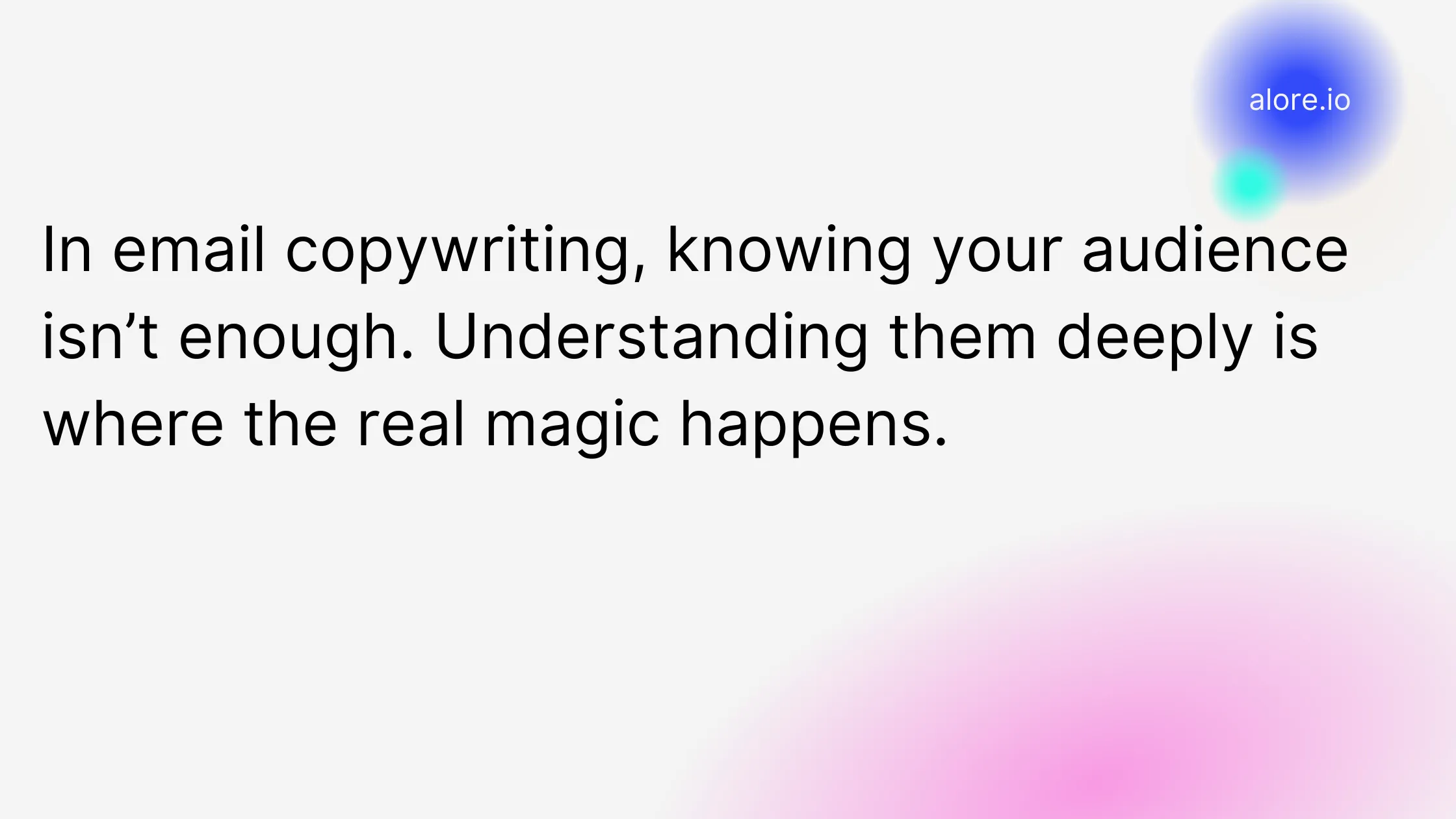
In email marketing, mastering the basics of email copywriting is necessary, but to truly set your campaigns apart, it's time to dive into advanced techniques. These methods focus on delving deeper into your audience's understanding, leveraging personalization for an authentic connection, and creating copy that leads to conversions.
Deep Dive into Audience Understanding
Understanding your audience is at the crux of any successful marketing campaign. The better you know your audience, the better you can tailor your emails to their preferences and needs. Let's delve into the tactics that can enhance your audience's understanding.
Segment Your Audience: Segmentation involves dividing your email list into categories based on certain criteria like demographics, browsing behavior, past purchases, etc. Segmented emails often lead to better open and click-through rates because the content is more targeted and relevant.
Analyze Email Metrics: Reviewing your email metrics can offer valuable insights about your audience. For instance, low open rates might indicate your subject lines aren't captivating enough, while low click-through rates may mean your email content or call-to-action needs improvement.
Conduct Surveys: Sending out periodic surveys can effectively gather more information about your audience. This can help you understand their preferences, interests, and what kind of content they want in your emails.
Monitor Feedback: Keep an eye on feedback from your subscribers. This could be direct feedback from emails or comments on your social media channels. Subscriber feedback can provide important insights into what you're doing right and where you can improve.
Building an Authentic Connection through Personalization
Personalization is a potent tool in the email marketer's arsenal. It can help you build an authentic connection with your audience, leading to higher engagement rates. Let's explore some personalization strategies.
Personalized Subject Lines: Including the subscriber's name in the subject line can instantly make your email feel more personal and can boost open rates. But remember, personalization is more than just using the subscriber's name. It's about making the email content relevant to them.
Dynamic Content: Dynamic content changes based on the recipient's data. For instance, you might send different content to your subscribers based on their location, past purchases, or their stage in the customer journey.
Behavioral Triggers: These are automatic emails sent based on the subscriber's behavior. For instance, if a subscriber leaves items in their online shopping cart, you can send an email reminding them to complete their purchase.
Strategies for Creating Converting Email Copy
Conversions are the ultimate goal of email marketing campaigns. Here's how you can create email copy that converts:
Clear and Compelling CTAs: Your call-to-action (CTA) is arguably the most important part of your email. Make it clear, compelling, and easy to find. A good CTA should tell the reader exactly what you want them to do and what they'll get in return.
Benefits, Not Features: Your subscribers don't just want to hear about your product's features – they want to know how it benefits them. Instead of listing features, explain how your product or service can solve their problem or make their life easier.
Scarcity and Urgency: If your subscribers think they might miss out on something, they're more likely to act quickly. Limited-time offers, or limited stock can create a sense of urgency and lead to higher conversion rates.
Testimonials and Reviews: Including testimonials or reviews in your emails can build trust and encourage conversions. If possible, use testimonials relevant to your email's content.
By mastering these advanced techniques, you can craft email copy that engages your audience and drives conversions, helping your business to grow and thrive. Effective email marketing is a mix of creativity, strategy, and constant learning. Keep experimenting with different techniques and keep your audience at the center of your email marketing efforts.
The Power of Words in Email Copywriting
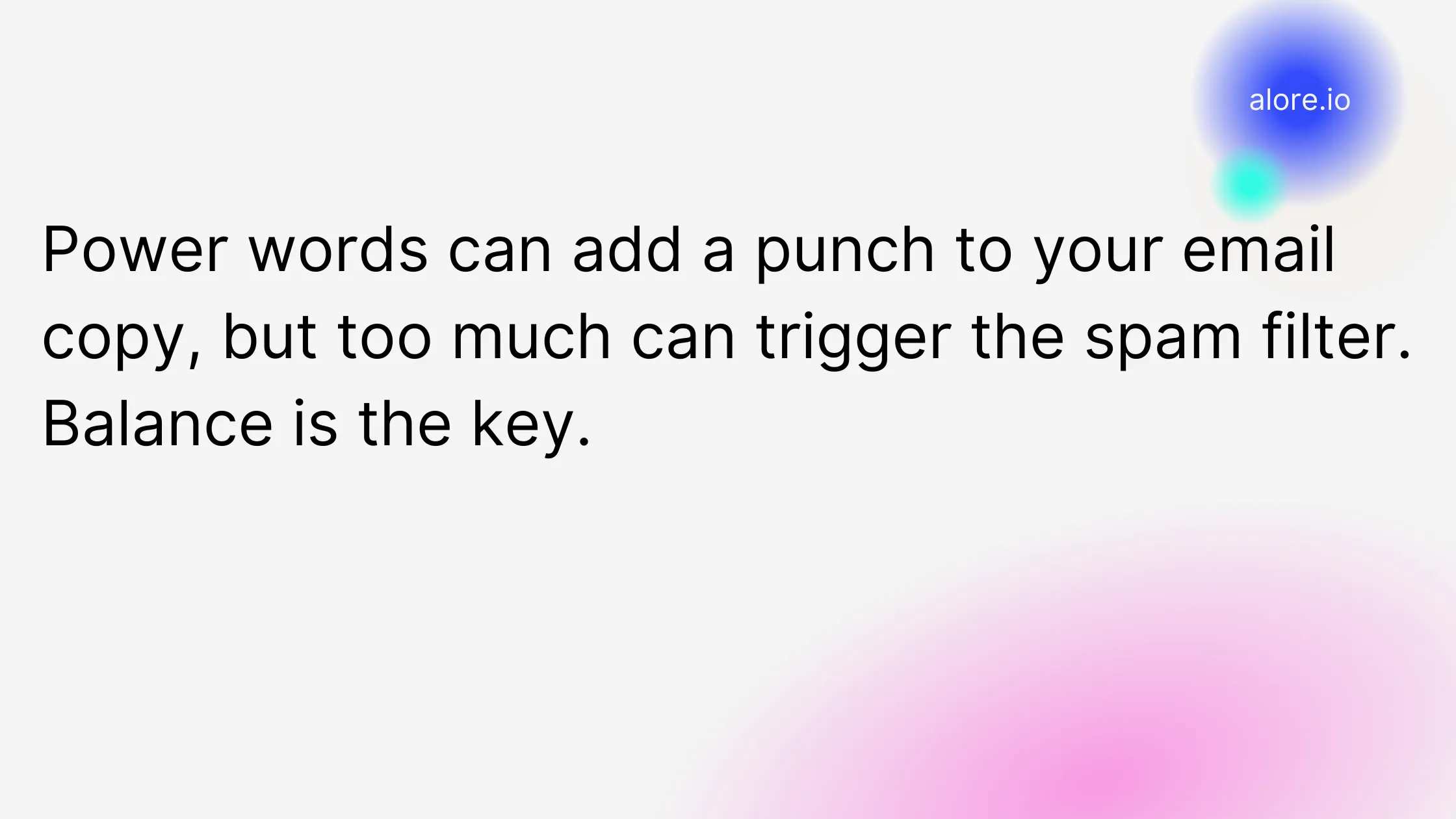
The words you choose in your email copy can make a significant difference in the success of your email marketing campaigns. From aligning your subject and body copy to striking a balance between power words and spam triggers and incorporating storytelling into your marketing emails, each technique can boost your marketing emails'' effectiveness. Let's delve into how you can harness the power of words in your email copywriting.
Techniques for Aligning Subject and Body Copy
The subject line forms the first impression of your email. It's crucial, therefore, to align your email subject lines in line with the content of your email. Discrepancies between the two can confuse your audience and lower your credibility. Here are some tips for aligning your email subject line and body copy:
- Promise and Deliver: If your subject line promises something, ensure you deliver on that promise in your email content. If the subject line does not match the body of your email, your recipients might feel cheated and lose trust in your emails.
- Stay on Topic: Keep your subject line and body copy focused on the same topic. For instance, if your subject line is about a product update, ensure the email content discusses the same.
- Tone Consistency: The tone of your subject line should match the tone of your email content. If your subject line is humorous, but your email content is serious, it can be off-putting for your recipients.
Power Words and Spam Triggers: The Balancing Act
Power words are persuasive words that trigger emotional responses, making your audience more likely to take action. However, it's essential to have creative ways to strike a balance between using power words and avoiding spam triggers.
- Use Power Words Sparingly: Power words like 'Free', 'Instant', 'Exclusive', can grab attention and boost your open rates. However, use them sparingly and contextually. Overuse can make your email sound salesy and insincere.
- Avoid Spam Triggers: Certain words, when used in the subject line, can trigger spam filters, causing your email to land in the spam folder. Words like 'Make Money', 'Guarantee', 'Risk-Free', are often associated with spam emails. Be mindful of these spam trigger words when crafting your email copy.
- Test and Monitor: Keep a close eye on your email metrics. If your emails frequently land in the spam folder, review your subject lines and email content for potential spam triggers.
The Magic of Storytelling in Emails
Storytelling is a powerful tool in email marketing. It can make your emails more engaging, memorable, and persuasive. Here's how you can incorporate storytelling into your emails:
- Humanize Your Emails: Telling a story can give your emails a human touch, making them more relatable. You could share a customer success story, the story behind your product, or even the story of how your company was founded.
- Build a Narrative: A good story has a beginning, middle, and end. Structure your emails like a narrative to guide your readers through your email smoothly and keep them engaged.
- Incorporate Emotion: Stories often evoke emotions, making your emails more impactful. An emotional connection can make your audience more receptive to your message.
By harnessing the power of words in your email copywriting, you can craft more effective emails that resonate with your audience and drive them to take action. Keep experimenting with different techniques, and always keep your audience in mind when crafting your email copy. The power of words in email copywriting is truly transformative, and mastering it can significantly enhance your email marketing efforts.
The Psychological Dimension of Email Marketing
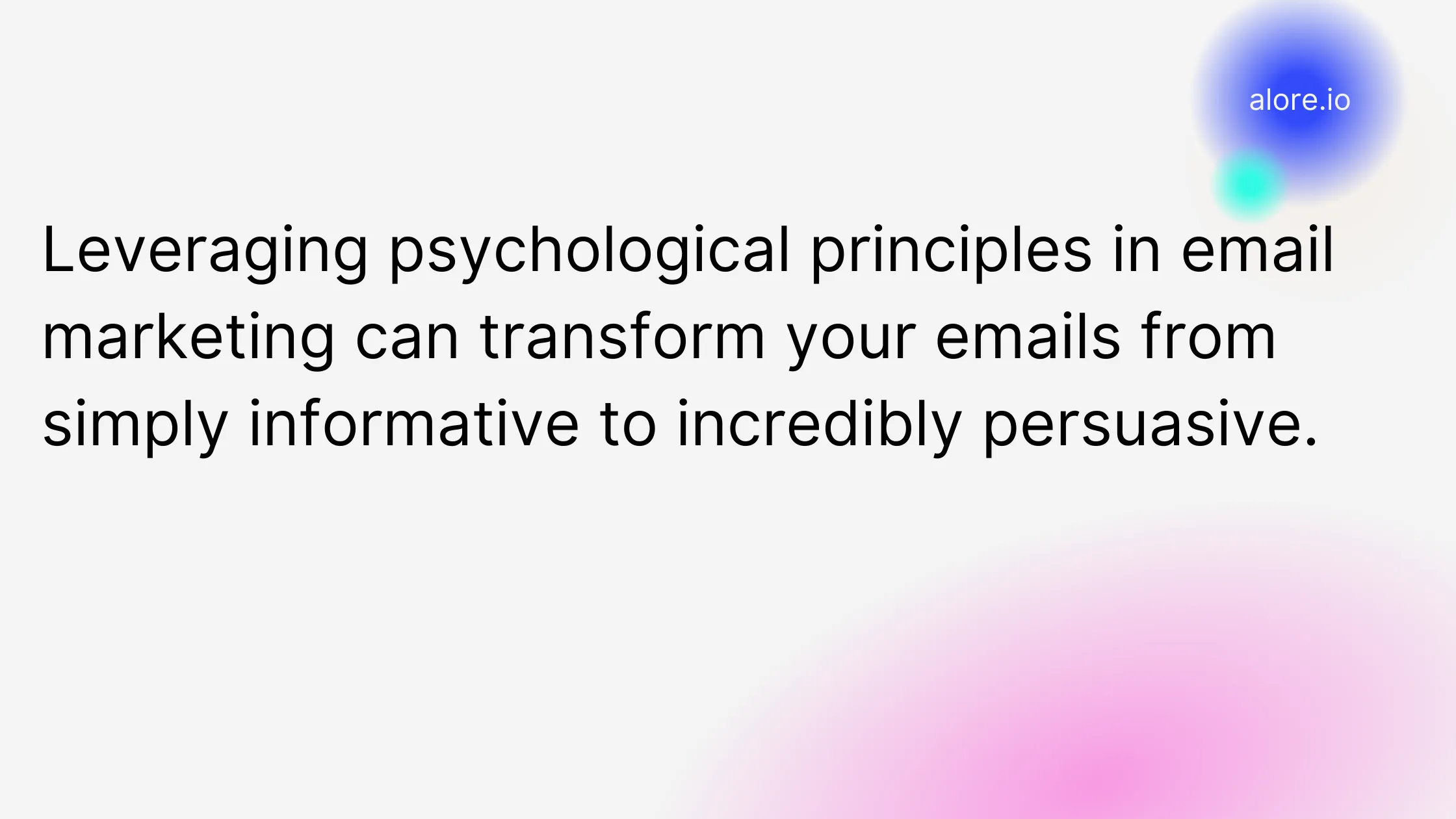
As marketers, we're not just contending with algorithms, metrics, and KPIs. We're dealing with human beings, and psychology drives human behavior significantly. Understanding the psychological principles that influence how people read, understand, and react to your emails can give you an edge in email marketing. Let's explore the psychological dimension of email marketing.
Psychology-Driven Email Marketing Strategies
Psychology plays a key role in making your email marketing campaigns more effective. It can help you better understand your subscribers, create more engaging emails and drive conversions. Here's how you can incorporate psychological principles into your email marketing strategies:
- Reciprocity: People feel compelled to give back when they receive something. Offering a free ebook, webinar, or trial can encourage your subscribers to return the favor by purchasing, leaving a review, or sharing your content.
- Social Proof: People tend to follow the actions of the majority. Including testimonials, reviews, or the number of subscribers in your emails can help establish trust and persuade subscribers to take action.
- Scarcity: Limited availability or time can create a sense of urgency and prompt subscribers to take action immediately. Use phrases like "Limited Time Offer," "Only a Few Left," or "Sale Ends Soon" in your emails.
- Personalization: People crave personalized experiences. Use subscriber data to tailor your emails to each subscriber's interests, behavior, and needs.
- FOMO (Fear of Missing Out): People don't want to miss valuable opportunities. Highlight exclusive offers, limited-time discounts, or popular products in your emails to capitalize on FOMO.
Creating Relevance in Your Emails
Creating relevance in your emails is crucial for engaging subscribers and driving conversions. Here's how you can create relevant emails using psychological principles:
- Segmentation: Not all your subscribers have the exact needs and interests. Segmentation allows you to group your subscribers based on various factors like demographics, behavior, or purchasing history and send them tailored emails that are more relevant to them.
- Use of Context: Context makes your emails more relevant. For instance, a follow-up email with a thank-you note or a related product recommendation would be relevant if a subscriber has just purchased.
- Timely Content: Sending timely content, such as seasonal offers, holiday greetings, or birthday discounts, can increase the relevance of your emails and drive engagement.
Understanding and leveraging the psychological dimension of email marketing can make your email campaigns more successful. By incorporating psychology-driven strategies and creating relevance in your emails, you can connect with your subscribers deeper, foster long-term relationships, and drive more conversions. Email marketing is not just about sending emails - it's about understanding human behavior and using that knowledge to engage and persuade your subscribers.
Specialized Email Copywriting Approaches

Different circumstances call for different approaches in email copywriting. Understanding when and how to employ these strategies to maximize your email marketing success. In this section, we'll explore the various specialized email copywriting approaches, namely inbound marketing via email, outbound sales success, and effective cold email copywriting.
Inbound Marketing via Email
Inbound marketing focuses on attracting customers through relevant and helpful content. This strategy aligns the content you publish with your customer's interests, so you naturally attract inbound traffic that you can convert, close, and delight over time. Here's how you can use email as a powerful tool for inbound marketing:
- Deliver Valuable Content: Keep your email subscribers informed and engaged by delivering valuable content directly to their inboxes. This could be in the form of blog posts, eBooks, webinars, or industry updates.
- Nurture Leads: Once a visitor converts to your landing page, use email as a channel to nurture them through the buyer's journey. Provide relevant information and resources that address their questions and their pain points.
- Build Relationships: Email provides a platform to build one-to-one relationships with subscribers. Personalize your emails, offer help, ask for feedback, and show appreciation to make your subscribers feel valued and respected.
Using Email Copy for Outbound Sales Success
While inbound marketing is about attracting customers, outbound sales is about finding them. Here's how you can use email copy to drive outbound sales success:
- Personalization: Make sure your outbound emails are personalized to each prospect. Use their company name and reference specific details about their business or industry.
- Value Proposition: Clearly communicate your value proposition in your emails. Explain how your product or service can solve the prospect's problems or improve their situation.
- Call to Action: Each email should have a clear, compelling call to action. This could be scheduling a call, downloading a resource, or visiting a web page.
Tips for Effective Cold Email Copywriting
Cold emails are unsolicited emails sent to a receiver without prior contact. It's a challenging approach, but if done right, it can generate leads, build relationships, and drive sales. Here are some more email tips, to help you craft effective cold email copy:
- Subject Line: Your subject line should be compelling and personalized to encourage the recipient to open the email. A good subject line could be a question, a statement that provokes curiosity, or a personalized value proposition.
- Introduction: Start your email by introducing yourself and explaining why you're reaching out. Keep it brief and relevant to the recipient.
- Value Offer: Explain what value you can offer to the recipient. This could be a solution to a problem they're facing, a resource they might find helpful, or an opportunity they might be interested in.
- Call to Action: End your email with a clear call to action. What should the recipient do next? This could be replying to an email, scheduling a call, or visiting a web page.
Sample Eye-Catching Cold Email Templates
Below are a few templates to help you start your cold email copywriting.
Introduction Email
Subject: [First Name], Quick Question
Hi [First Name],
My name is [Your Name] from [Your Company]. We help businesses like yours [describe what your company does].
I noticed that [mention something relevant about their company or industry]. I thought you might be interested in [mention your offer or solution].
Would you be available for a quick call [provide date and time] to discuss this further?
Looking forward to your response,
[Your Name]
Value Offer Email
Subject: [First Name], Here's a Way to [Benefit]
Hi [First Name],
I hope this email finds you well. My name is [Your Name] from [Your Company].
I noticed you've been [mention something relevant about their business or industry]. Our [product/service] has helped businesses like yours [explain how your product/service can help them].
Here's a [link/resource] that explains this in more detail.
Could we schedule a call [provide date and time] to explore this further?
Best,
[Your Name]
Follow-up Email
Subject: [First Name], Just Following Up
Hi [First Name],
I just wanted to follow up on my previous email.
Our [product/service] could be a great fit for [their company], and I'd love to discuss how we can help you [benefit].
Please let me know a time that works for you to chat.
Best,
[Your Name]
Remember, the key to successful email copywriting, whether inbound, outbound, or cold, is always focusing on the recipient. Your emails should be personalized, relevant, and provide value. Understanding your audience and tailoring your emails to their needs and interests can create more effective email campaigns that drive engagement and conversions.
Perfecting Your Email Copywriting Approach
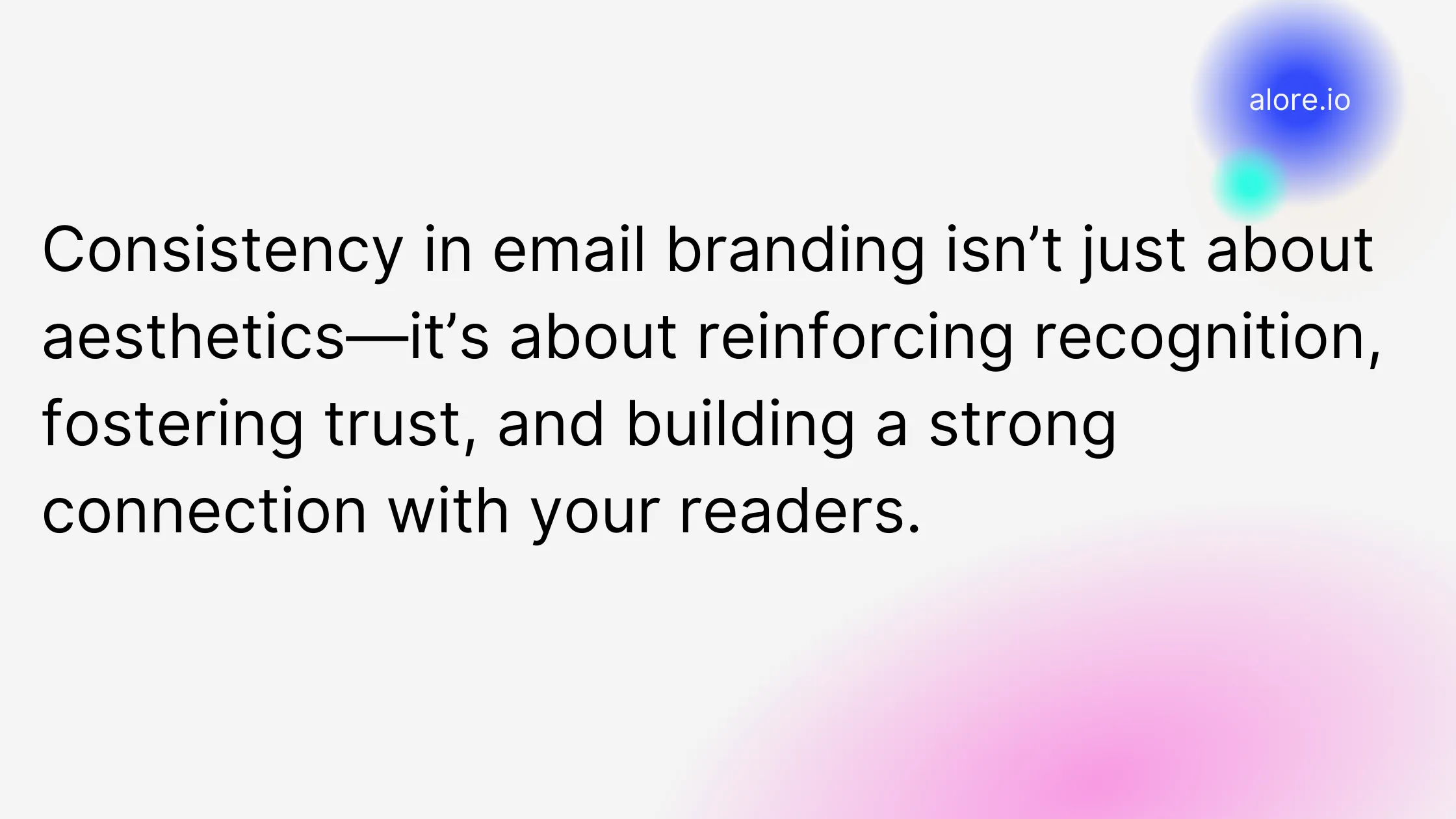
Perfecting your email copywriting approach involves much more than just learning and applying the basics. It requires ongoing refinement and optimization. In this section, we will explore the importance of testing and iteration in email copywriting and the significance of maintaining consistent branding.
The Role of Testing and Iteration in Email Copywriting
Much like any other form of marketing, email copywriting is a never-ending cycle of testing, learning, and refining. No matter how experienced you are as a copywriter, it's impossible to predict with 100% certainty how your audience will respond to your email. This is where the role of testing and iteration comes into play.
- A/B Testing: This method compares two versions of an email to determine which one performs better. You can split your email list in half and send one version of your email to one half and a different version to the other half. Doing so lets you understand which version drives more opens, clicks, and conversions. You can A/B test almost anything in your email, including the subject line, preview text, headline, call-to-action, layout, and more.
- Multivariate Testing: If you want to simultaneously test multiple elements in your email, you can use multivariate testing. This method allows you to understand how different elements of your email interact and how those interactions affect your email's performance.
- Analysis and Iteration: After conducting your tests, it's crucial to analyze and learn from the results. What worked? What didn't work? Use these insights to iterate and improve your future emails.
Importance of Consistent Branding in Email Copywriting
Consistent branding is a crucial aspect of effective email copywriting. It not only helps in building brand recognition but also in establishing trust with your audience. When your emails maintain a consistent look, feel, and voice, your recipients start recognizing your brand and expecting your emails. Here's how you can ensure consistent branding in your email copywriting:
- Brand Voice: Your brand voice is the unique personality and emotion infused into your company's communications. It should be consistent across all your marketing channels, including your emails. Whether your brand voice is professional, friendly, humorous, or quirky, make sure it shines through in your email copy.
- Visual Elements: Your emails should reflect your brand's visual identity. This includes your logo, color scheme, typography, and any other visual elements that represent your brand. Keeping these elements consistent can make your emails instantly recognizable to your recipients.
- Content Consistency: The content of your emails should also be consistent with your overall brand messaging. This includes the topics you talk about, the values you uphold, and the promises you make to your customers.
Remember, the process of perfecting your email copywriting approach is an ongoing one. It requires constant testing, learning, and refining. But with the right mindset and approach, you can continuously improve your email copy to drive more opens, clicks, and conversions. In the end, email copywriting is all about understanding your audience, providing value, and creating meaningful connections.
Encouraging Reader Action
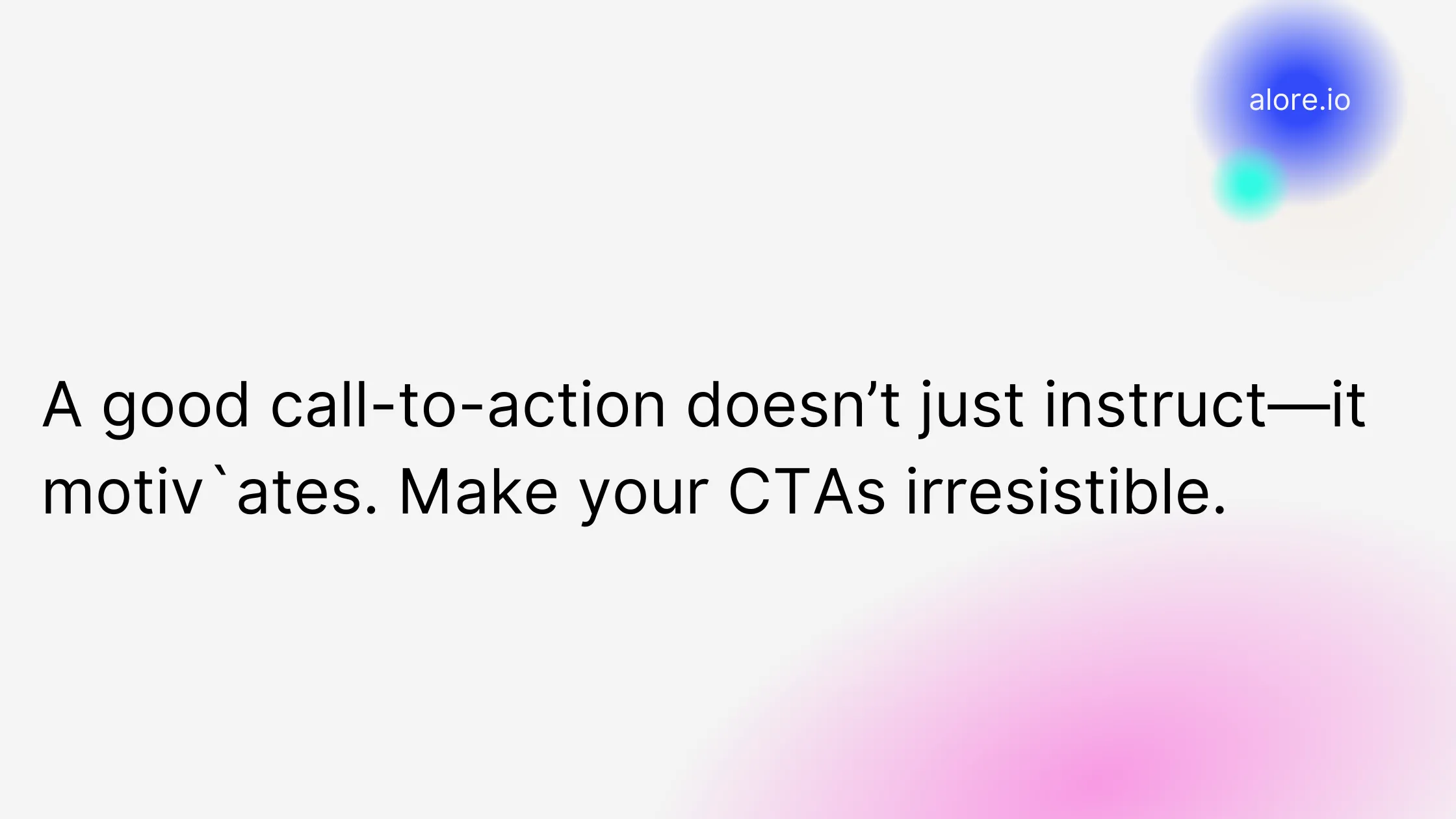
Email marketing's primary objective is to encourage recipients to take a desired action, whether making a purchase, signing up for an event, or simply clicking a link to read a blog post. However, to achieve this, you must use actionable language, craft compelling calls to action, and understand the importance of highlighting benefits over features. Let's delve into each of these in detail.
The Importance of Actionable Language in Email Marketing
Using actionable language in your email marketing campaigns is essential in directing your recipients toward the next step you want them to take. This involves using strong, persuasive words that spur readers into action.
- Verb Use: Start with strong verbs that prompt action. For example, instead of using passive phrases like 'Our new collection can be seen here,' use 'Explore our new collection here.'
- Clarity: Make sure the action you want your readers to take is crystal clear. Ambiguity can often lead to inaction.
- Urgency and Exclusivity: Actionable language often involves creating a sense of urgency or exclusivity. Words like 'limited time,' 'exclusive,' or 'today only' can nudge your subscribers to act quickly.
Crafting Calls to Action That Get Results
The call to action (CTA) is a crucial element in your email copy that directs your reader towards the desired action. Crafting a CTA that gets results requires creativity, clarity, and an understanding of your audience's motivations. Here are a few tips:
- Be Clear and Direct: Your CTA should leave no doubt about what you want your reader to do. A simple 'Shop Now' could do the trick if you want them to shop your new collection.
- Create Urgency: CTAs that convey a sense of urgency often perform well. For example, 'Shop Now, Sale Ends in 24 Hours!'
- Make It Stand Out: Your CTA should be easy to spot. Consider using a brightly colored button or a hyperlinked text in bold.
Here are some examples that might be useful in understanding.
Bad CTA: "Click here."
Why is it bad: It's too vague and doesn't inform the user what they're clicking for or what action they're expected to take.
Good CTA: "Download Your Free eBook Now!"
Why is it better: It's specific, immediate, and lets users know exactly what they'll get when they click.
Bad CTA: "Our New Collection"
Why is it bad: It doesn't inspire action or indicate what the user should do next.
Good CTA: "Explore Our New Collection Today!"
Why is it better: It uses a strong, actionable verb and encourages immediate action.
Bad CTA: "Get in touch."
Why is it bad: It's too generic and doesn't convey any urgency or specific action.
Good CTA: "Schedule Your Free Consultation Today!"
Why is it better: It's specific, offers a clear benefit, and creates urgency with the word "today."
Bad CTA: "Sign up"
Why is it bad: It doesn't specify what the user is signing up for or why they should do it.
Good CTA: "Sign Up and Get 10% Off Your First Order"
Why is it better: It provides a clear incentive for signing up and explains what the user will get.
Bad CTA: "Submit"
Why is it bad: The word 'submit' is often associated with surrendering or giving in - it's not a persuasive or encouraging word for most people.
Good CTA: "Claim Your Free Trial"
Why is it better: It's more assertive and persuasive, indicating the user is gaining something beneficial.
Bad CTA: "Buy Now"
Why is it bad: It could be too direct or forceful without providing a compelling reason to purchase.
Good CTA: "Secure Your Seat Now - Limited Availability!"
Why is it better: It creates a sense of urgency and scarcity, motivating users to act quickly.
Bad CTA: "More Info"
Why is it bad: It's not compelling and doesn't suggest any benefit or valuable information awaiting the reader.
Good CTA: "Discover Our Secret Tips for Success"
Why is it better: It sparks curiosity and promises valuable insights, making the user more likely to click to learn more.
Bad CTA: "Join Us"
Why is it bad: It's vague and doesn't give any specific reason for why someone should join.
Good CTA: "Join Our VIP Club for Exclusive Deals and Discounts"
Why is it better: It indicates a clear benefit for joining and makes the user feel special or privileged.
Bad CTA: "Order"
Why is it bad: It's too blunt and doesn't inspire immediate action or convey any sense of urgency.
Good CTA: "Order Now for Next Day Delivery"
Why is it better: It implies a clear benefit and creates urgency, motivating users to act immediately.
Bad CTA: "See More"
Why is it bad: It's not exciting or engaging and doesn't offer a compelling reason to click.
Good CTA: "Uncover Our Top Picks for You"
Why is it better: It makes the offer feel personalized and creates curiosity, encouraging users to click to see their tailored recommendations.
Highlighting Benefits, Not Features
One common mistake in email marketing is focusing too much on the features of your product or service, instead of the benefits it provides to the user. While features are important, understanding how your product or service can solve their problems or improve their lives truly drives people to take action.
- Focus on the 'Why': Instead of simply stating what your product does (the feature), explain why that matters to your customer (the benefit).
- Emphasize Pain Points: By understanding and highlighting your customer's pain points, you can demonstrate how your product or service serves as a solution.
- Use Customer Testimonials: Showcasing testimonials from happy customers who have benefited from your product or service can serve as powerful proof that the benefits you claim are real.
Incorporating these strategies into your email marketing campaigns can significantly boost engagement and conversion rates. Always remember your email copy's ultimate goal is to provide value to your readers and encourage them to take the next step in their customer journey. Focusing on actionable language, crafting effective CTAs, and highlighting benefits over features can drive more reader action and achieve better results with your email marketing efforts.
Building Relationships Through Email
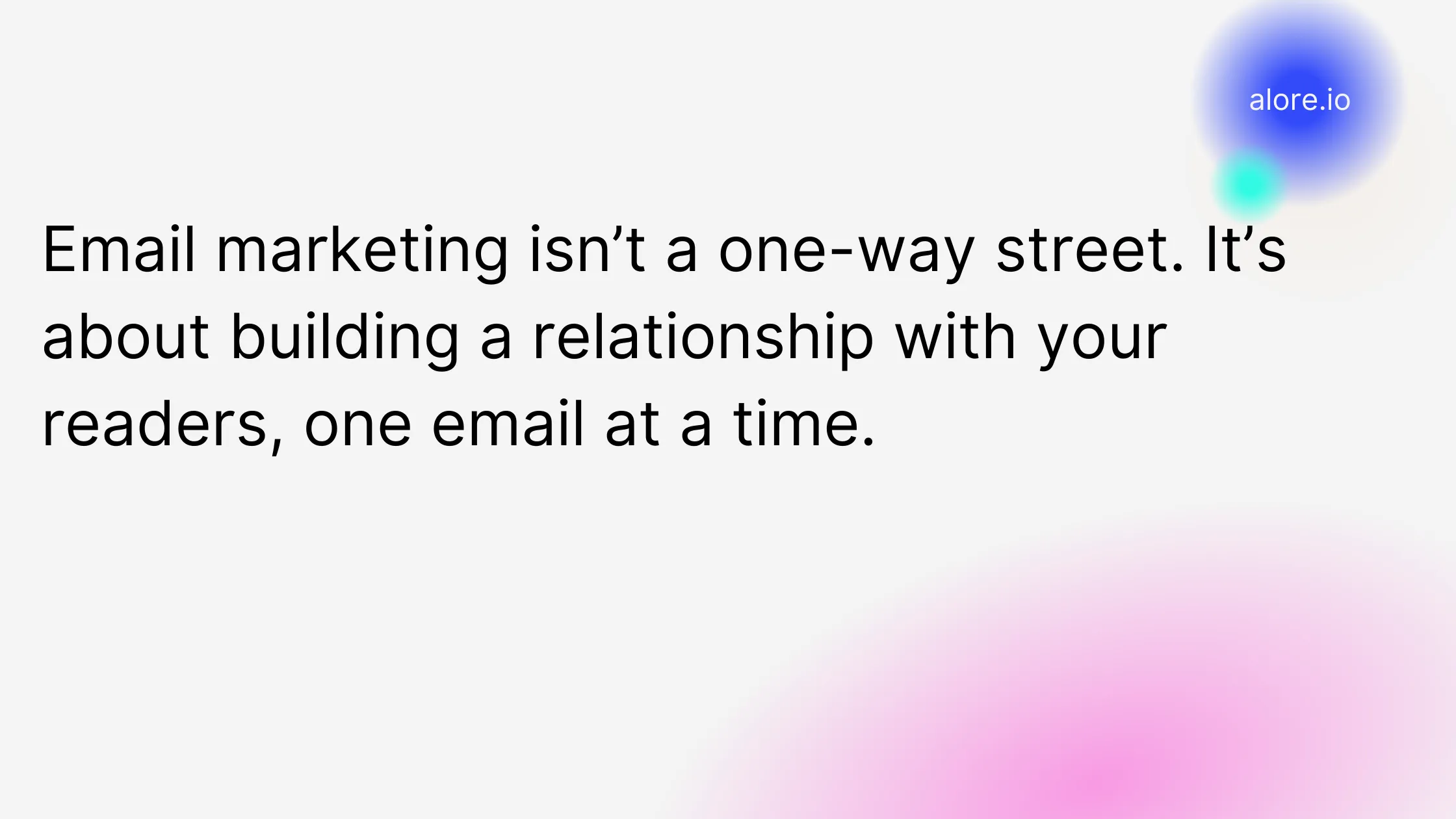
As email marketing continues to evolve, the focus has shifted from driving sales to building and maintaining relationships with your audience. It is important to understand that behind every email address is a real person. By forging meaningful connections with your email subscribers, you can transform them from passive readers into engaged members of your brand's community.
How to Cultivate Reader Relationships via Email Marketing
A well-maintained reader relationship is like a two-way street where both the sender and the receiver benefit from the ongoing interaction. As a business, your relationship with your subscribers should be based on trust, transparency, and mutual value.
Personalize Your Emails: Utilizing customer data to tailor your email content is crucial for building relationships. Segmentation and personalization make your readers feel special and valued. From using their first name in your emails to sending personalized product recommendations, personalization helps you foster a deeper connection with your audience.
Regularly Provide Value: An important aspect of building and maintaining relationships is continually delivering value to your readers. This could mean providing them with valuable content, exclusive offers, or helpful information about your products or services.
Interact and Engage: Encourage interaction by asking for feedback, opinions, or suggestions. You can also hold contests or quizzes to boost engagement. This makes your emails more interactive and helps you gather valuable insights about your audience.
Maintain Consistency: Consistency in email frequency and quality is key. Irregular email sending can confuse and annoy your subscribers, while consistent emails keep you top of mind and help to solidify your relationship with your subscribers.
Rewarding Your Readers: A Key Strategy
Customer loyalty is invaluable, and rewarding your readers is one of the best ways to foster loyalty. A well-executed reward strategy not only encourages repeat purchases but also helps strengthen your relationship with your audience.
Let’s look at ten examples of rewards you can offer and why they work:
- Discounts or Coupons: These can motivate subscribers to purchase, driving sales for your business. Moreover, everyone loves a great deal - a universal incentive for working across different industries.
- Exclusive Content: This could be a free eBook, a special report, or access to a members-only blog. By offering content that can't be found elsewhere, you increase the perceived value of your emails.
- Early Access: Giving subscribers early access to your new products or sales can make them feel special and privileged, fostering a closer connection with your brand.
- Competitions or Giveaways: These can drive engagement as they provide a fun and interactive way for subscribers to interact with your brand.
- Free Shipping: If you run an eCommerce business, offering free shipping can be a powerful incentive for subscribers to purchase.
- Loyalty Program: A well-designed loyalty program can encourage repeat purchases, as subscribers are motivated to earn points or rewards.
- Birthday or Anniversary Discounts: Sending personalized discounts or offers on your subscriber's birthday or on the anniversary of their subscription can show that you value and remember them.
- Webinar or Course Access: Free access to a webinar or course related to your industry can provide value to your subscribers and position your brand as an expert in the field.
- Free Samples or Trials: If you're selling a product or service, a free sample or trial can give subscribers a risk-free way to experience what you offer.
- Invitation to Exclusive Events: Inviting your subscribers to attend an exclusive event can give them a unique experience and a chance to interact with your brand in person.
The most effective rewards cater to your customer's needs and preferences. By offering rewards your subscribers value, you show them that you appreciate their business and care about their experience, which helps foster stronger relationships.
In conclusion, building relationships through email marketing requires a genuine understanding of your audience, consistently delivering value, and rewarding your readers for their loyalty. By focusing on these aspects, you can cultivate a loyal and engaged subscriber base that contributes to your business's long-term growth.
Practical Guidance and Inspiration
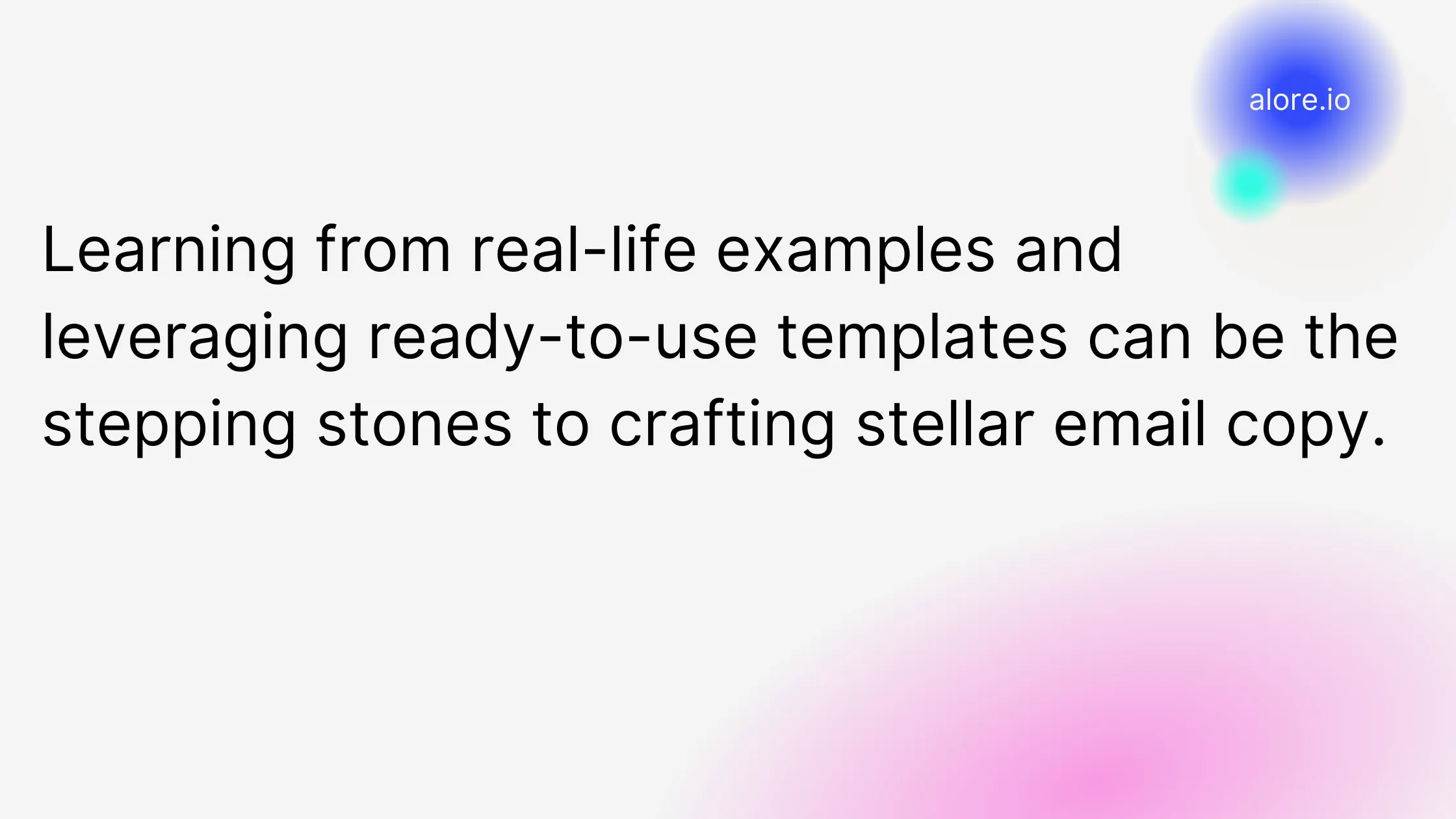
Applying the theoretical knowledge of email copywriting to real-world situations requires practice and inspiration. This section delves into practical examples of effective email copywriting and provides ready-to-use templates to jumpstart your email marketing efforts.
Real-Life Email Copywriting Examples
Analyzing successful email marketing campaigns can provide valuable insights into what works and why. Let's look at some real-life examples of compelling email copywriting and examine why they're effective:
- The 'Fear of Missing Out' (FOMO) Approach: An email from a clothing brand uses the subject line, "Last chance to get 50% off on all items!" This line creates a sense of urgency and scarcity, compelling readers to act fast to avail the offer.
- The Personal Touch: A streaming service sends an email with the subject line, "John, your favorite show's new season is here!" This shows the power of personalization in capturing attention and driving engagement.
- Educational and Value-Driven: A fitness brand sends an email with the subject line, "Your 7-day healthy meal plan is inside." This approach focuses on providing value to the subscriber, establishing the brand as a helpful resource.
- Intrigue and Curiosity: A software company sends an email with the subject line, "The secret to boosting productivity." By promising to reveal a 'secret,' this line piques the reader's curiosity and encourages them to open the email.
- Direct and Compelling Call-to-Action: A non-profit organization sends an email with the subject line, "Help us make a difference. Donate today." The direct call to action motivates the reader to take immediate action.
These examples illustrate various strategies employed in email copywriting, such as creating urgency, personalization, providing value, piquing curiosity, and using a strong call to action.
Ready-to-Use Email Copywriting Templates
Now that we've looked at some real-life examples, let's dive into ready-to-use email copywriting templates that you can customize and adapt to your needs:
Welcome Email:
Subject Line: Welcome to [Your Brand], [Recipient's Name]!
Body: We're thrilled to have you here! Get ready to [benefit they'll receive]. In the meantime, you can start by [action they can take].
Promotional Email:
Subject Line: [Recipient's Name], get [discount]% off our best-selling products!
Body: As one of our valued customers, we're offering you [discount]% off our best-selling products. But hurry, this offer ends soon!
Re-engagement Email:
Subject Line: We've missed you, [Recipient's Name]
Body: It's been a while since we last connected. We've been busy improving [Product/Service] and think you'll love the changes.
Educational/Content Email:
Subject Line: Learn how to [desired outcome]
Body: We've compiled a comprehensive guide on [desired outcome]. Check it out and start [action they can take] today!
Review Request Email:
Subject Line: We'd love to hear your thoughts, [Recipient's Name]
Body: Your feedback helps us improve. Could you spare a few minutes to share your thoughts on [Product/Service]?
These templates are designed to cover various types of email marketing campaigns, from welcome emails and promotional emails to re-engagement emails and more. They can be customized to suit your brand voice and tailored to your audience's preferences and needs.
In conclusion, understanding the theory behind effective email campaign copywriting is just one part of the equation. Applying these principles to real-world scenarios and learning from successful examples can provide practical guidance and inspire your own successful email campaigns.
Email Copywriting FAQs
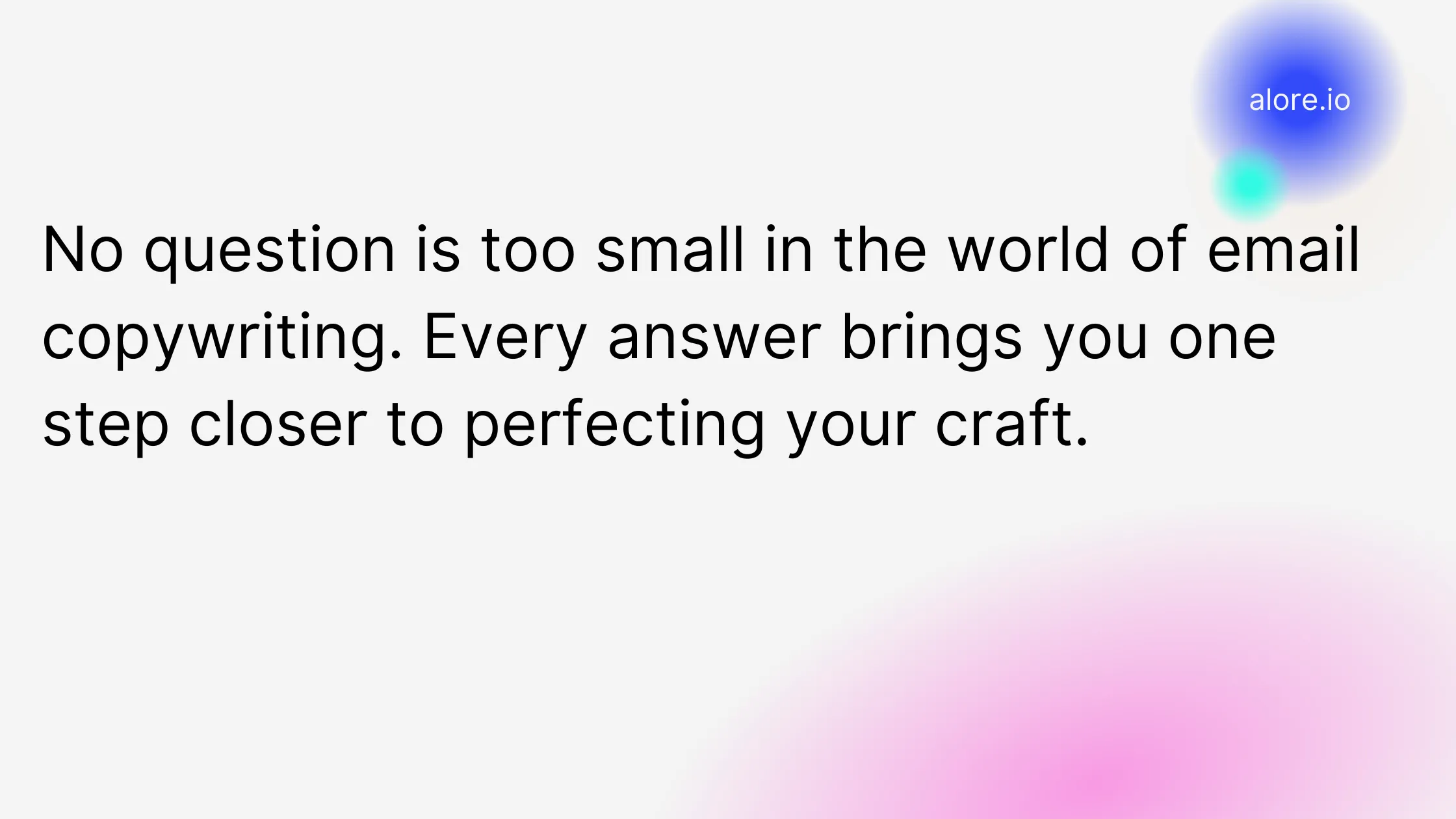
Email copywriting, like any form of communication, can be as complex and intricate as you want to make it. It's not uncommon to have questions, so we've created this FAQ section. Here we'll try to address some of the most common questions related to email copywriting. Let's dive in!
Answering Frequently Asked Questions about Email Copywriting
Q1: What is email copywriting?
Email copywriting is the art of creating engaging, compelling content for emails with the aim of achieving a specific marketing goal. This could be increasing brand awareness, driving traffic to a website, selling a product, or retaining customers.
Q2: Why is email copywriting important?
Email copywriting is a key component of an effective digital marketing strategy. It allows businesses to communicate with their audience in a personalized way, build relationships, and prompt immediate action. Good email copy can significantly improve open rates, click-through rates, and conversions.
Q3: How do you write compelling email copy?
Writing compelling email copy involves understanding your audience, being clear and concise, adding a personal touch, including a clear and compelling call-to-action, and delivering value. It also involves continually testing, learning, and adapting based on your results.
Q4: What should be the length of an email copy?
There's no set rule for the length of an email copy, as it largely depends on the purpose of your email and your audience's preferences. However, in general, it's best to keep your email copy as concise as possible while clearly conveying your message.
Q5: How can I make my emails stand out in a crowded inbox?
To make your emails stand out in a crowded inbox, focus on crafting a compelling subject line, as it's the first thing your recipient sees. Personalization can also help your emails stand out. Additionally, delivering consistent value can make your emails something your audience looks forward to.
Q6: How do I avoid my emails being marked as spam?
Avoid spam trigger words, excessive punctuation, and all-caps text in your subject line and email body. Also, ensure your emails are providing value and not just trying to sell something. Maintaining a good sender reputation and following email marketing best practices can also help.
Q7: How can I improve my email open rates?
Improving email open rates involves crafting compelling subject lines, personalizing your emails, segmenting your email list, testing different send times, and maintaining a consistent sending schedule.
Q8: What is a call-to-action (CTA) in email marketing?
A call-to-action (CTA) in email marketing is a prompt that tells the recipient what action they should take after reading your email. It could be clicking on a link, purchasing, downloading a resource, or replying to an email.
Q9: How often should I send marketing emails? The frequency of sending marketing emails depends on your audience, your industry, and the kind of relationship you have with your subscribers. It's important to find a balance to keep your audience engaged without overwhelming them. Regular testing and monitoring your email metrics can help determine the optimal email frequency.
Q10: How can I test and improve my email copy?
You can test your email copy by running A/B tests on elements like subject lines, preview text, headlines, body copy, CTAs, images, and send times. Based on the results, you can refine your email copy to better resonate with your audience and achieve higher engagement rates.
The process of crafting effective email copy is a journey. These FAQs should provide a helpful starting point, but remember, the key to success lies in continual learning, testing, and refining.
Conclusion

The Ever-Evolving Nature of Email Marketing
The landscape of email marketing is ever-evolving. With advancing technology, changing user behaviors, and shifting market trends, strategies that worked a year ago might not work today. As such, staying on top of these changes and continually adapting your email copywriting strategies is essential.
The Importance of Continuous Improvement in Email Copy
Email copy is a powerful tool in your marketing arsenal, but it's not a 'set it and forget it' element. Instead, it requires continuous improvement and constant iteration. There are several reasons why continuous improvement in email copy is crucial:
Keeping Up with Changing Audience Preferences
Your audience's preferences are not static; they change over time. By continually improving and updating your email copy, you can ensure that your messaging aligns with your audience's current needs, interests, and preferences.
Staying Ahead of Competitors
In a crowded market, businesses need to innovate and improve to stay ahead constantly. If your email copy remains static while your competitors continually improve theirs, you risk falling behind.
Maximizing Email Marketing ROI
Email marketing has an impressive ROI, but that doesn't mean you should rest on your laurels. You can maximize your email marketing ROI by continually striving to improve your email copy.
How to Continuously Improve Your Email Copy
Continuous improvement in email copy doesn't have to be a daunting task. Here are some strategies to help you in this endeavor:
Regular A/B Testing
A/B testing allows you to test different versions of your email copy to see which performs better. By regularly running A/B tests, you can continually refine and improve your email copy based on data-driven insights.
Feedback and Surveys
Requesting feedback from your email subscribers can provide valuable insights into what they like and don't like about your emails. You can use this feedback to make improvements to your email copy.
Stay Updated with Industry Trends
Keep an eye on email marketing trends and best practices. Incorporate relevant trends into your email copy to keep it fresh and engaging.
Regular Review and Analysis
Take the time to review your email campaigns regularly. Look at your open rates, click-through rates, and conversion rates. Identify patterns or trends and use these insights to improve your future email copy.
Learning from the Best
Look at brands that are known for their exceptional email marketing. Learn from their strategies and see if there are elements that you can incorporate into your own email copy.
Wrapping Up
In conclusion, continuous improvement in email copy is not just a nice-to-have; it's a must-have. It's what will keep your emails fresh, engaging, and effective. It will help you connect with your audience on a deeper level, stay ahead of your competitors, and maximize your email marketing ROI.
So, as we end this comprehensive guide on email copywriting, remember this: learning and improvement never stop. Keep testing, keep learning, and keep improving. In the world of email marketing, only the people and brands that do this are the ones that thrive. It's a continuous journey, but one that is undoubtedly worth it.









